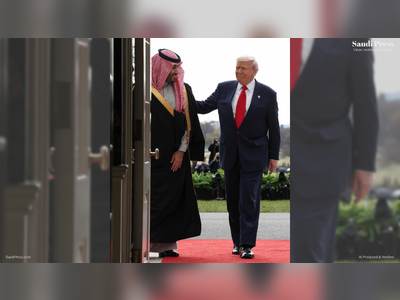Riyadh Metro Records Over One Hundred Million Journeys as Saudi Capital Accelerates Transit Era
Six automated lines in Riyadh surpass 100 million passenger trips less than nine months after launch; infrastructure milestone marks deep transformation under Vision 2030
Riyadh’s newly opened metro network has rapidly transformed urban mobility in the Saudi capital, registering in excess of one hundred million passenger journeys in under nine months since the two-stage launch of the six automated lines.
This milestone underscores the extent of the city’s shift from car-dominated transport to a modern, rail-based public system.
The driverless metro spans approximately one hundred seventy-six kilometres and comprises eighty-five stations across six lines, linking the airport, universities, the King Abdullah Financial District and the city’s historic core.
The Blue Line has emerged as the busiest route, accounting for nearly half of all riders to date.
The network’s punctuality rate has been reported at nearly ninety-nine-point-eight per cent, according to transport officials.
On the surface, scenes of Doha-style infrastructure contrast with the experience of Riyadh just a few years ago.
At Qasr al-Hokm station, families ride in dedicated sections, single men sit in separate zones and premium “first-class” cabins are available for a small surcharge.
The system, built with global consortiums and celebrated as a proof point of the kingdom’s economic transformation under the Vision 2030 agenda, opens with an accessible fare structure and integrated ticketing through the “Darb” app and smart-card machines.
Women commuters have begun to make significant use of the metro, gaining independent mobility in a city previously shaped by car culture and chauffeur-driven transport.
Many young women now ride directly to university campuses rather than relying on taxis or family vehicles, signalling a broader social shift aligned with national reform.
The new network is tightly integrated with Riyadh’s bus system—eighty-nine feeder lines and more than 2,900 stops link to the metro stations—offering a truly multimodal transit solution in a city where sidewalk infrastructure and temperatures once made walking difficult.
The elevated profile of the project is in keeping with the crown prince’s ambition to reposition the city as a global tourism and business hub, reduce dependence on fossil-fuel-driven transport and host major international events including the next-stage World Cup.
While the core six-line system is fully operational, planning is already underway for a seventh metro line to serve upcoming new districts such as Qiddiya and Diriyah, and for the extension of existing lines as the city’s growth accelerates.
The rapid adoption of the Riyadh Metro signals not only a transport revolution but also a cultural one—reshaping how citizens, residents and visitors move, interact and live in Saudi Arabia’s capital.
This milestone underscores the extent of the city’s shift from car-dominated transport to a modern, rail-based public system.
The driverless metro spans approximately one hundred seventy-six kilometres and comprises eighty-five stations across six lines, linking the airport, universities, the King Abdullah Financial District and the city’s historic core.
The Blue Line has emerged as the busiest route, accounting for nearly half of all riders to date.
The network’s punctuality rate has been reported at nearly ninety-nine-point-eight per cent, according to transport officials.
On the surface, scenes of Doha-style infrastructure contrast with the experience of Riyadh just a few years ago.
At Qasr al-Hokm station, families ride in dedicated sections, single men sit in separate zones and premium “first-class” cabins are available for a small surcharge.
The system, built with global consortiums and celebrated as a proof point of the kingdom’s economic transformation under the Vision 2030 agenda, opens with an accessible fare structure and integrated ticketing through the “Darb” app and smart-card machines.
Women commuters have begun to make significant use of the metro, gaining independent mobility in a city previously shaped by car culture and chauffeur-driven transport.
Many young women now ride directly to university campuses rather than relying on taxis or family vehicles, signalling a broader social shift aligned with national reform.
The new network is tightly integrated with Riyadh’s bus system—eighty-nine feeder lines and more than 2,900 stops link to the metro stations—offering a truly multimodal transit solution in a city where sidewalk infrastructure and temperatures once made walking difficult.
The elevated profile of the project is in keeping with the crown prince’s ambition to reposition the city as a global tourism and business hub, reduce dependence on fossil-fuel-driven transport and host major international events including the next-stage World Cup.
While the core six-line system is fully operational, planning is already underway for a seventh metro line to serve upcoming new districts such as Qiddiya and Diriyah, and for the extension of existing lines as the city’s growth accelerates.
The rapid adoption of the Riyadh Metro signals not only a transport revolution but also a cultural one—reshaping how citizens, residents and visitors move, interact and live in Saudi Arabia’s capital.
